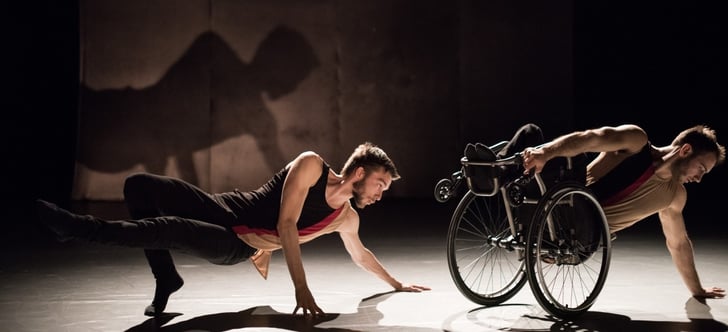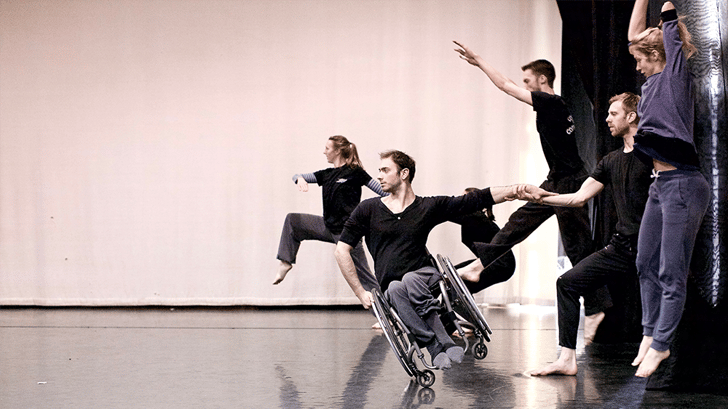Joel’s older brother was driving the car, packed with siblings, returning from a sunny day at the lake when the accident happened. At the age of 9 Joel suffered a spinal cord injury, but it didn’t stop him from making his way to the dance floor.
 Photo by Hugo Glendinning
Photo by Hugo Glendinning
Joel’s father was a gymnast, his mother was a dancer and all seven siblings were dancing as well. But dancing came with mixed feelings for Joel.
To be honest I wasn’t really into dancing when I was a kid. I liked basketball and other sports but to quit dancing wasn’t really an option. Until the accident. So that’s my dark joke – I was relieved when I didn’t need to go to dance class anymore, Joel says with a crooked smile.
Joel had just auditioned and been accepted to Utah's Children's Dance Theater the month before the accident, but his spinal cord injury put an end to both dancing and the other sports he was practicing. At least temporarily.
The years went by and in high school Joel returned to dancing, pushed by his 10 years older brother Graham. Graham was a dance student at the University of Maryland at the time, and he created a duet for Joel and himself.
"I've Had It Up To Here" became their first project together, exploring a new form of motion, dancing and interaction, but also confronting the accident, trying to come to terms with the fact that Graham was driving the car that day in 1998 when Joel was injured. Graham wrote the text and Joel did the original musical compositions, and the brothers have kept working together in different projects since then.
 Candoco Dance Company, foto by Pedro Machado 2016
Candoco Dance Company, foto by Pedro Machado 2016
Today Joel is an established, professional dancer in the Candoco Dance Company in UK. Candoco produces contemporary dance for audiences and participants and wants to challenge and broaden the perceptions of art and ability.
The Candoco Dance Company is also a partner of “Moving Beyond Inclusion”, a two-year project that brings six inclusive dance companies from across Europe together.
It’s great to meet dancers from all over Europe, with similar values and goals, building networks, Joel says.
The mainstream art is not really representing the diversity in society at large. The opportunities for disabled artists to present their work are still limited and that’s why Moving Beyond Inclusion came to life. It is a forum for creative and professional exchanges, choreographic research, symposia, performances and skills development for people working in dance.
The disability could be a possibility, Veera Suvalo Grimberg from the Dance Company “Spinn” and Moving Beyond Inclusion says. In dancing we express ourselves with our bodies, and dancing gets more interesting through our differences.
Visit the project website: Moving Beyond Inclusion.




